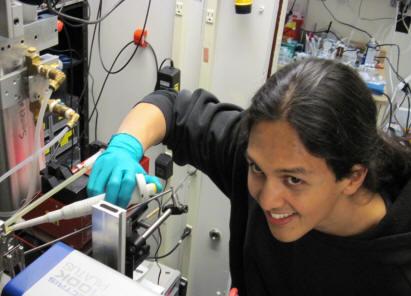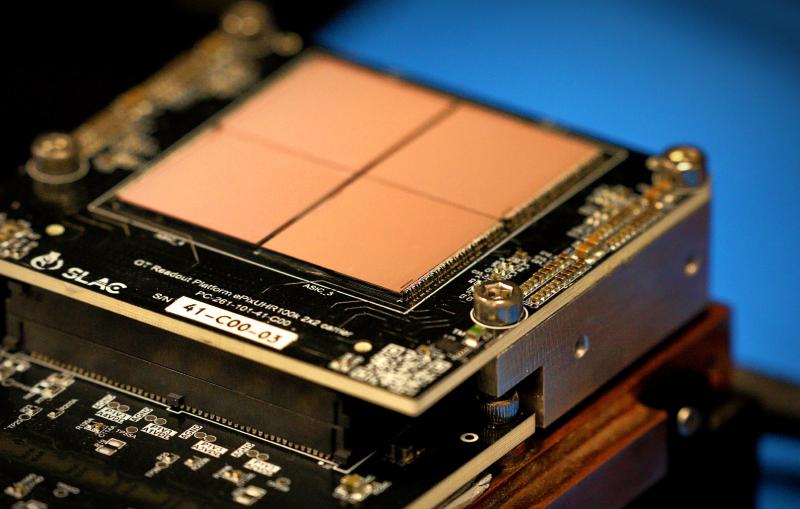Award Recognizes X-ray Research on Organic Semiconductors
Guarav "Gino" Giri, who this summer completed his doctoral work in chemical engineering at Stanford, has been selected to receive this year's Melvin P. Klein Scientific Development Award for his pioneering work aimed at understanding and improving organic semiconductor performance and developing new production methods.
By Glenn Roberts Jr.
Guarav "Gino" Giri, who this summer completed his doctoral work in chemical engineering at Stanford, has been selected to receive this year's Melvin P. Klein Scientific Development Award for his pioneering work aimed at understanding and improving organic semiconductor performance and developing new production methods. Applications for his work include the production of flexible, low-cost and highly efficient thin-film electronics.
Giri will receive the award, which honors the late University of California-Berkeley biophysicist known for his research on oxygen-producing processes in plants, in an Oct. 3 ceremony during the LCLS/SSRL Annual Users' Meeting and Workshops.
Award recipients are selected each year by members of the Stanford Synchrotron Radiation Lightsource Users' Organization Executive Committee. The award recognizes the research achievements of undergraduates, graduate students and postdoctoral fellows and is also intended to promote the sharing of research results based on work performed at SLAC's SSRL.
Giri, who will leave Stanford to pursue postdoctoral research in microfluidics at the Massachusetts Institute of Technology, said that when he first joined Zhenan Bao's chemical engineering research group at Stanford he didn't know much about the use of synchrotron X-rays for materials research.
"The more I got into X-rays, the more I realized how powerful the technique was," he said. "It's so information-dense; it gives you so much information about what's happening with your sample."
Experiments at SLAC's SSRL and Cornell University's Cornell High Energy Synchrotron Source (CHESS) proved vital to Giri's work. The thin-film research "was the perfect project for me," he said, as it married his interests in fluid dynamics and crystal growth and had clear practical applications in industry.
Giri's work revealed that a coating method can be used to tune molecular packing and improve the flow of electrons through organic semiconductors, and "opens up a new direction for the electronics field," said Bao. "It has a great potential for production. Many research groups around the world are now starting to use this method." She added that his work can potentially be applied to related materials and other research areas.
Giri said, "I'm pretty excited about that part: As an engineer I want to make something that's usable out in the real world." His most recent research in the field, he said, has focused on ways to improve materials performance by creating very uniform thin films, and on other types of molecules and polymers relevant to commercial applications.
SLAC's Michael Toney, head of the SSRL Materials Sciences Division, noted in his recommendation letter that a device built by Giri allowed precise synchrotron measurements of crystal formations and their relationship to electron-flow properties and that Giri's "outstanding" work has already appeared in major journals, including Nature.
Giri said the Klein award is especially important to him because it is recognition by colleagues he has worked closely with in his research. "This is special because I know so many of the people here," he said.
Contact
For questions or comments, contact the SLAC Office of Communications at communications@slac.stanford.edu.







